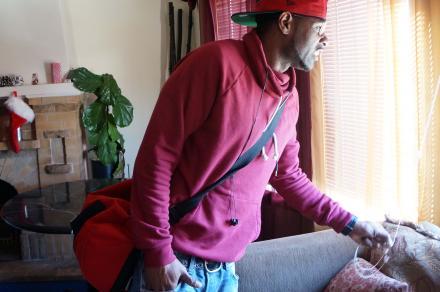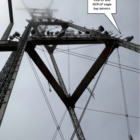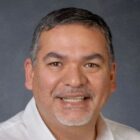“This is the San Francisco Americans pretend does not exist,” James Baldwin said on KQED more than half a century ago.
Baldwin, a world-renowned black writer and activist, was referring to the Fillmore district of San Francisco, where he and KQED documented the after-effects city bulldozing, literally, black neighborhoods in the name of “urban renewal,” and the unemployment and isolation of young blacks in Hunters Point.
“There is no moral distance between the facts of life in San Francisco and the facts of life in Birmingham,” Baldwin said in the same year of the 16th street Baptist church bombing that killed four little girls in Birmingham, Ala.
Since then, the number of black residents of San Francisco has shrunk by nearly half. Black children are grossly over-represented in San Francisco’s foster care and juvenile justice systems, and unemployment among blacks in San Francisco still remains higher than in other groups.
This month, Mayor Ed Lee held his first of many in a series public forums about the diversity and the economy. Speakers included black CEOs and venture capitalists who shared their ideas and initiatives to connect low-income people of color to the wealth created by the region’s tech bubble.
The mayor’s policy adviser, Theodore Miller, pledged at the event to “connect those diverse and disconnected communities to efforts that work … and include more folks in these rising tides,” and ultimately “strengthen our diversity,” KALW News reported.
Bureaucratese usually belies having actual “efforts that work” lined up. The truth is that access to the “these rising tides,” that separate San Franciscans with specialized skills and education from those without is a wedge among us that grows bigger everyday while the city slowly and desperately tries to rectify.
In nonbureaucratic terms, a young African-American man, who described to KALW his move to a group home for former foster youth, hit the nail on the head about segregation today in San Francisco.
“Hopefully we can live here … till we get on our feet,” Dejon Lewis, 21, said. “But this is not a place where you get comfortable or we call home.”
Though describing life at a group home, this statement could have easily been used to describe the relationship of San Francisco’s poorer residents to the larger economy today. Just like Lewis’s group home, the city’s not a place for the low- to-moderate income to get comfortable or call home. San Francisco welcomes people of color — as long as they don’t make less than $50,000 a year.
San Francisco no longer bulldozes the homes of people who don’t belong. It just keeps building luxury condos down the street until they leave themselves. This is the San Francisco Baldwin — and countless other civil rights activists of his generation — hoped would not exist.










